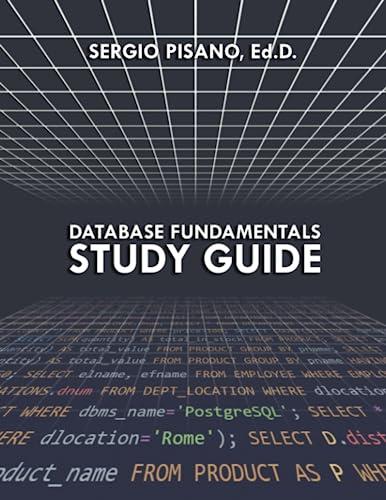Question
N=[1,2,3,4,5]; s1=[0,0,0,0,0]; c1=s1;e1=c1; x=pi/3; for i=1:5 for j=0:N(i) s1(i)=s1(i)+(-1)^j*x^(2*j+1)/factorial(2*j+1); end end e1=abs(sin(x)-s1); fprintf('Part a) sin(pi/3) ') fprintf('S(%i) = %.10f, Error = %.15e. ',[N;s1;e1]) x=pi/4; for


N=[1,2,3,4,5]; s1=[0,0,0,0,0]; c1=s1;e1=c1; x=pi/3; for i=1:5 for j=0:N(i) s1(i)=s1(i)+(-1)^j*x^(2*j+1)/factorial(2*j+1); end end e1=abs(sin(x)-s1); fprintf('Part a) sin(pi/3) ') fprintf('S(%i) = %.10f, Error = %.15e. ',[N;s1;e1]) x=pi/4; for i=1:5 for j=0:N(i) c1(i)=c1(i)+((-1)^j)*(x^(2*j))/factorial(2*j); end end e1=abs(cos(x)-c1); fprintf('Part b) cos(pi/4) ') fprintf('S(%i) = %.10f, Error = %.15e. ',[N;c1;e1]) x=-2; e1=[0,0,0,0,0]; for i=1:5 for j=0:N(i) e1(i)=e1(i)+x^j/(factorial(j)); end end e=abs(exp(x)-e1); fprintf('Part c) exp(-2) ') fprintf('S(%i) = %.10f, Error = %.15e. ',[N;e1;e])
I have codes for PART 2. I need PART 4
Step by Step Solution
There are 3 Steps involved in it
Step: 1

Get Instant Access to Expert-Tailored Solutions
See step-by-step solutions with expert insights and AI powered tools for academic success
Step: 2

Step: 3

Ace Your Homework with AI
Get the answers you need in no time with our AI-driven, step-by-step assistance
Get Started


